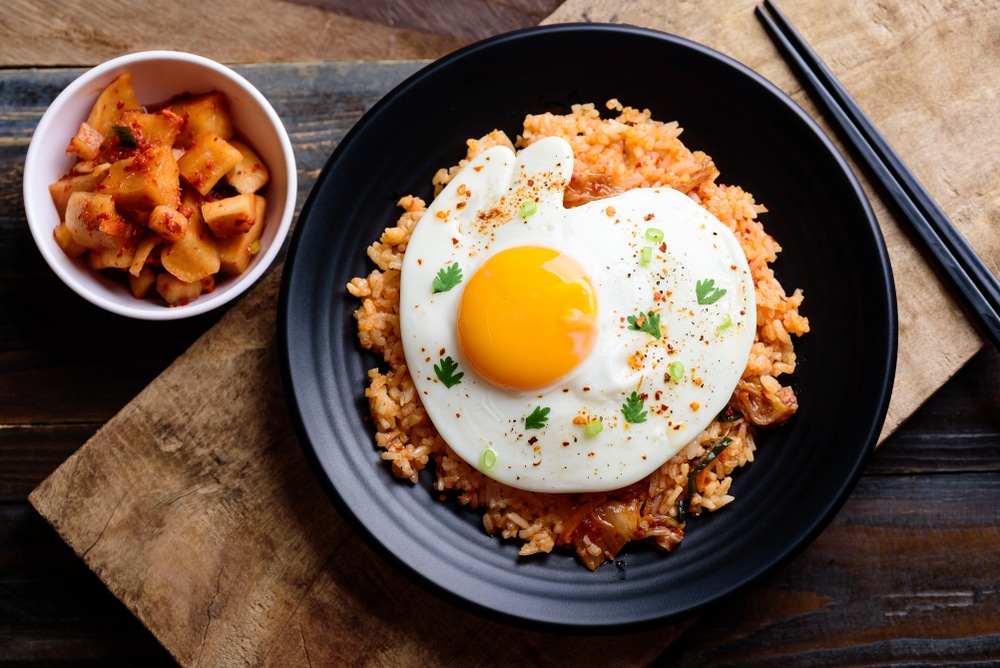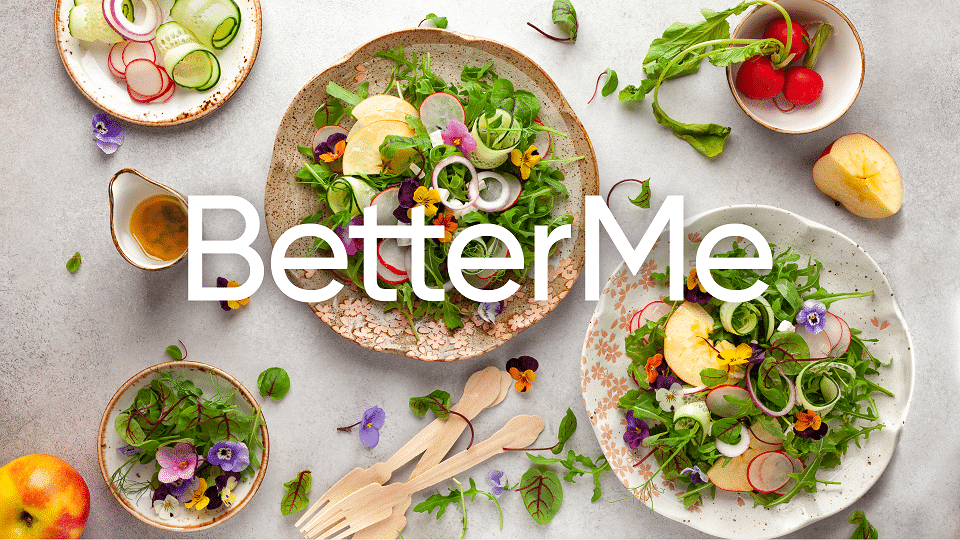Korean Diet To Lose Weight: How Effective And Sustainable Is It?

Thanks to globalization, foods that used to be only available in specific countries can now be enjoyed anywhere. One of the diets that is more accessible now is the Korean diet. It has become increasingly popular, especially due to the belief that it can promote weight loss. Can you use the Korean diet to lose weight? Join us as we answer this question and learn more about this diet.
 The Tropical Secret for Healty Weight Loss Know more
The Tropical Secret for Healty Weight Loss Know more
What Is The Korean Diet?
Most people use the words Korean diet and Korean food interchangeably despite them being two separate concepts. Korean food refers to the food constituents of the Korean diet. The Korean diet, on the other hand, represents the traditional food culture of Koreans, different cooking methods, and dietary patterns. A typical Korean diet adheres to the given dietary rules or principles, which include:
Rice Is A Staple
The Korean diet is mainly composed of bab (cooked rice), which is the foundation of the diet. You will find most having rice for breakfast, lunch, dinner, and even as a snack.
Using A Serving Of Bapsang
If you have never tried this diet before, you may not know what bapsang is, its taste, or its preparation method. So what is bapsang? It means a table setting for meals to be enjoyed. It comes from two terms: bap (cooked rice) and sang (table).
Kimchi Is A Must At Every Meal
Kimchi is a traditional Korean spicy pickled veggie dish. It has a rich history in Korea, dating back over two thousand years. It is prepared by mixing cabbage, radishes, or scallions in brine with ginger, garlic, chili pepper, and fish sauce, then allowing everything to ferment.
Vegetable Consumption
The other principal aspect of the Korean diet involves eating large amounts of fresh or cooked vegetables (namul). There are no limitations to the types of veggies you can consume from wild landscapes and the seas. You are free to get creative with them, so long as you consume them in large amounts in every meal.
Consideration Of The Protein Servings
The Korean diet allows an individual to enjoy different protein sources, such as fish, legumes, and red meat. However, there are rules about the required servings of each. For legumes and fish the underlying rule is to consume them with moderate to high frequency . However, low consumption is urged for red meat.
Use Spices/Herbs
Korean food is rich in spices and herbs, so it is not surprising that the diet allows for the use of these seasonings. Yes, you can use them, but there are preferred seasonings for different meals. For example, when cooking Banchan, you should use different Jang (fermented soy products), medicinal herbs, and perilla or sesame oil.
You are free to use seasonings, especially fermented soy products like doenjang (soybean paste), Kajang (soy sauce), and gochujang (red pepper paste). The diet is also characterized by using more medicinal herbs such as green onion, garlic, red pepper, and ginger.
Some Foods Are A No
The Korean diet has several food restrictions. It does not recommend consuming wheat, sugary, highly processed, fatty, and dairy products. That means milk, cheese, fries, butter, and other foods in these categories are a no.
Preparation Methods
The Korean diet limits the use of deep-fat fried cooking. However, other methods are allowed, so long as you use different recipes based on rice and grains and include more fermented foods.
Additionally, use a cooking method that best suits your ingredients. For example, cook more meals using seasonal produce and have more home-cooked meals.
Can The Korean Diet Promote Weight Loss?
You will likely notice when you look at most of the Korean population that most have a slim physique. Additionally, the country has shown a low prevalence of obesity and metabolic disorders .
Because of this, many people have praised their diet, acknowledging it as the main reason the citizens manage their weight. But is this the case? Even before nutritionists evaluate the effect of this diet on weight loss, people have already taken an interest in it to help with their weight loss efforts.
But some people are on the fence because they want to know if science backs up using the diet for weight loss. For a better insight into what science says, let us evaluate a few studies that have analyzed the association between the Korean diet and weight loss.
Study 1
A 2022 study investigated the association between the modified Korean health eating index (MKHEI), including a Korean-balanced diet, and abdominal obesity risk. It was conducted on data from adults ages 20 to 64 (4,886 males and 7,431 females) using the Korea National Health and Nutrition Examination Survey VI (2013–2016) (3).
Abdominal obesity is a worldwide threat and affects all ages. It is defined as excessive abdominal fat accumulation strongly associated with metabolic disease risk in non-obese people. It is prevalent as well among Asians (3).
Evidence shows that diet affects abdominal obesity beneficially or adversely, regardless of an individual’s energy balance. This study wanted to discover the link between the MKHEI and Korean balanced diet with abdominal obesity risk.
The study found that people with abdominal obesity were more likely to have lower MKHEI scores, meaning that they had lower adherence to a balanced Korean diet. They concluded that for Korean women especially, a Korean-balanced diet may lower the risk of abdominal obesity(3).
 The Tropical Secret for Healty Weight Loss Know more
The Tropical Secret for Healty Weight Loss Know more
Study 2
In this 2017 study, investigators found that the Korean diet prevented obesity and ameliorated insulin resistance in mice previously fed on a high-fat diet (6).
Obese mice switched to the Korean diet stopped gaining excess weight and had improved glucose homeostasis and blood lipid leves compared to those which continued on the high-fat diet (6).
Animals are not the same as humans, but this study is a promising basis for further investigation (6).
Whether you’re a workout beast or just a beginner making your first foray into the world of fitness and dieting – BetterMe has a lot to offer to both newbies and experts! Install the app and experience the versatility first-hand!
Analysis Of The Studies
Based on these studies, we can tentatively conclude that the Korean diet may have the potential to promote maintaining a healthy weight. Additionally, the diet may even help prevent abdominal obesity and insulin resistance (6), (3). But even without looking at these studies, the diet can be argued to promote weight loss because of its dietary principles. Some of these include:
High Emphasis On Vegetable Consumption
When you look at most weight loss diet plans, you will realize they have one thing in common: emphasis on veggie consumption. Vegetables are included in weight loss plans because most of them have low-calorie counts and high nutrient contents.
For example, a cup of the radishes used to make kimchi provides only 18 calories (1). Similarly, one cup of red cabbage weighing roughly 70 g has less than 22 calories (1). This is good news for any weight watcher because you consume few calories that allows you to maintain a calorie deficit for weight loss.
However, you can’t only eat vegetables. According to Medical News Today, a healthful weight loss meal should comprise 50% fruit and veggies (2). The rest should be 25% whole grains and 25% protein (2).
It Minimizes The Consumption Of Sugary And Processed Meals
One thing you will hear over and over when on a weight loss journey is to avoid consuming sugary and highly processed foods or drinks. Such meals have been found to contain added sugars which contribute to weight gain and the risk of obesity (5). The added sugars also have high-calorie counts that may lead to a calorie surplus instead of a deficit.
It Limits The Consumption Of Red Meat
Red meat has for a while been deemed less than ideal for heart health. But there is no denying that it contains several nutrients our bodies require for several functions. In 2015, researchers reviewed 15 studies and discovered that switching to a plant-based diet led to weight loss of nearly 10 pounds on average Going off this analysis we could infer that the diet might promote weight loss due to the limitation of red meat consumption.
Sample Of A Korean Diet
Talk to your nutritionist if you are interested in following this weight-loss diet. They will help you determine the best food combinations throughout the day and those that can help you maintain a calorie deficit. More so, they will pay attention to your daily dietary requirements. Here are examples of foods or meals that they can recommend you include in your diet plan (6):
Breakfast Ideas (6):
- Grilled seaweed: 13 calories
- Cabbage kimchi: 10 calories
- Cooked rice: 313 calories
- Boiled tofu with soy sauce: 185 calories
- Dried Pollack soup: 147 calories
Snack Ideas (6):
- White bread: 277 calories
- Banana milk: 213 calories
- Orange juice: 90 calories
- Pear: 39 calories
Lunch Ideas (6):
- Doenjang stew with tofu: 99 calories
- Cooked rice: 313 calories
- Seasoned chicken stew: 250 calories
- Seaweed with cucumber salad: 25 calories
- Cabbage kimchi: 10 calories
Dinner Ideas (6):
- Bean sprouts with kimchi soup: 34 calories
- Young radish kimchi: 12 calories
- Lettuce and green pepper with seasoned soybean paste: 31 calories
- Pork bulgokgi: 214 calories
- Cooked rice: 313 calories

East Korean Diet Recipes To Try
If you are looking for healthy recipes to try in your weight loss journey, here are some to consider (8):
Recipe: Bibimbap (8)
This is an all-in-one meal that is super healthy and adheres to all the Korean dietary rules. It is as follows:
Ingredients (8):
- 3 cups cooked (1 cup uncooked rice)
- 1 cup soybean sprouts
- 2 shiitake mushrooms, sliced
- 2 cups baby spinach
- ½ zucchini, julienned
- ½ carrot, julienned
- ¼ red cabbage, sliced
- 1 tbsp. vegetable oil
- 2 tbsp. Yondu
- 1 tbsp. sesame seeds
- 1 tsp. sesame oil
- 2 spring onions, sliced
- 2 tbsp. Gochujang (Korean chili paste)
Preparation (8):
To Cook Vegetables
- Heat a drizzle of vegetable oil in a pan over high heat and cook these veggies one by one (mushrooms, carrot, zucchini, and cabbage).
- Season with a few Yondu drops before taking the veggies out of the pan.
To Make Namul
- Heat a few oil drops in a pan over high heat, then cook the soybean sprouts for 2 minutes.
- Transfer them to a bowl, then season with a drizzle of Yondu and half a teaspoon of sesame oil.
- Add the sesame seeds, then stir well.
- Repeat the same process with spinach, but this time let them cook for only 30 seconds on the pan before seasoning.
- Divide the rice into two bowls. Place veggies over the rice in separate piles and top with spring onion and sesame seeds.
- Serve with Gochujang on the side, and allow people to adjust depending on their desired level of spiciness.
Recipe: Tofu And Rice (8)
Rice is a staple in the Korean diet, as we can tell by now. So here is a quick vegetarian rice recipe to consider:
Ingredients (8):
- 150 g rice, cooked
- 100 g firm tofu
- 50 g of kimchi
- 2 spring onions
- 1 avocado, sliced
- 10 crispy seaweed thins
- 1 tbsp. Yondu (replaces salt or soy sauce)
- 1 tbsp. sesame oil
- 1 fresh red chilli
- 1 tsp. black or white sesame seeds
Preparation (8):
- Place an ice cube over the mix and cover with parchment paper.
- Heat in the microwave oven for two minutes, then remove the ice cube
- Drizzle sesame oil and Yondu, then stir well.
- Cut spring onion slices and fresh chilli using scissors and sprinkle over the rice
- Add kimchi and the sliced avocado
- Sprinkle sesame seeds
- Use crispy seaweed to wrap some rice, avocado, and kimchi with your hand in every bite
Recipe: Jumeokbap (8)
These Korean umami rice balls are perfect snack ideas for your entire family. Here is how you prepare them:
Ingredients (8):
- 200 g sushi rice, cooked (600g cooked white rice)
- 25 g dried seaweed snack, chopped
- 2 tbsp. Yondu (substitutes salt, highlights rice and seaweed flavor)
- 2 tbsp. sesame oil
- Sesame seeds and chives to decorate
- (Optional) 2 tbsp. Gochujang chili paste
Preparation (8):
- Take a bowl and combine rice, sesame oil, Yondu, and seaweed, then mix well.
- Use your hands to form little balls the size of table tennis or a golf ball from the mixture.
- Serve when topped with chopped chives and sesame seeds.
- Add a drop of Gochujang Korean chili paste on top of each ball for a spicy touch and interesting flavor.
Dropping pounds by the dozens without putting yourself through the wringer is everyone’s weight loss pipe dream. But what if we told you that the BetterMe app can make that happen? Keep yourself in prime shape with our fat-blasting workouts, delicious budget-sparing recipes, and body-transforming challenges with our app!








0 Comments